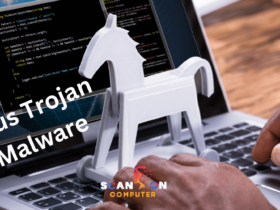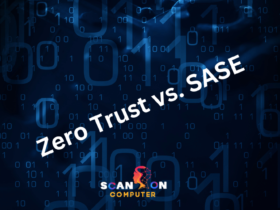Cyber security vulnerabilities are the root cause of nearly every major breach, ransomware attack, and system disruption seen worldwide. In 2025, the threat landscape is evolving rapidly, with businesses facing increasingly sophisticated exploits targeting everything from legacy servers to cloud-native applications and remote workers. To stay ahead, organizations must understand vulnerability types, leverage AI-driven management, and establish proactive controls across every digital asset.
What Are Cyber Security Vulnerabilities?
A cyber security vulnerability is any weakness—technical, process-based, or human—that attackers can exploit to gain unauthorized access, steal data, disrupt services, or cause damage. Vulnerabilities may include unpatched software, misconfigured cloud services, insecure APIs, exposed credentials, poor password hygiene, or lack of employee security awareness.
Keywords: cybersecurity vulnerability, information security vulnerability, vulnerability vs exploit, global vulnerabilities 2025
Types of Cyber Security Vulnerabilities
-
Technical Vulnerabilities
-
- Unpatched Software: Failing to apply updates leaves known issues open (e.g., the infamous Log4Shell, CVE-2021-44228).
- Weak Authentication: Predictable, reused, or default credentials remain a major entry point for attacks.
- Misconfigured Cloud & SaaS: Poorly set cloud permissions, unprotected storage buckets, and unencrypted VMs could expose terabytes of data.
- Unsafe Network Protocols: Reliance on outdated (HTTP vs HTTPS) or vulnerable protocols leaves traffic readable and modifiable.
- Lack of Input Validation: SQL injection, buffer overflow, and XSS flaws can allow attackers to run arbitrary code or steal session data.
-
Human-Centric Vulnerabilities
-
- Phishing Susceptibility: Social engineering exploits user psychology; global phishing attacks (DNC 2016, Colonial Pipeline) remain on the rise.
- Poor Password Hygiene: Simple, reused, and shared passwords enable credential stuffing and brute force attacks.
- Privilege Misuse: Excessive admin rights and weak access controls lead to privilege escalation risks and insider threats.
- Insufficient Training: Employees unaware of cyber hygiene and safe digital practices are often the weakest link.
Cloud, Third-Party, and Supply Chain Vulnerabilities
With digital transformation, businesses increasingly rely on cloud apps, SaaS, and third-party APIs, dramatically broadening the “attack surface.”
- Cloud Vulnerabilities: Misconfigured storage (e.g., exposed S3 buckets), lack of segmentation, and unpatched cloud workloads offer attackers novel entry points.
- Third-Party Risks: Vendor integrations and open APIs introduce indirect vulnerabilities. A single compromised supply chain partner can propagate risk.
- Continuous Assessment Required: Static, annual reviews are no longer enough. Continuous monitoring is key for cloud and hybrid environments.
The Vulnerability Management Lifecycle
Smart organizations now approach vulnerabilities through an ongoing, AI-driven process:
- Asset Discovery & Inventory
Catalog every cloud asset, server, endpoint, and data flow to ensure full visibility. Automated tools and agentless cloud scanners update inventories in real-time.
- Prioritization & Risk Assessment
Using AI tools and contextual scoring, assess which vulnerabilities pose the greatest business risk. Prioritize fixes by asset value, exploit likelihood, and compliance impact (e.g., CVSS scores, real-world exploit activity).
- Automated Vulnerability Scanning & Reporting
Deploy continuous vulnerability scanning (not just periodic assessments), enhanced with machine learning that adapts to new attack vectors. Generate live reports and dashboards for IT/security teams and executives.
- Remediation & Mitigation
Remediate high-priority vulnerabilities first—patch, reconfigure, or isolate. Mitigate those that cannot be fully remediated due to business constraints. Automated patching and remediation via AI playbooks is increasingly available.
- Verification, Monitoring & Continuous Improvement
Continuously monitor for new risks and verify that remediation steps hold. Use breach simulations, automated pentesting, and real-time compliance checks to maintain an up-to-date vulnerability posture.
- Governance, Metrics & Reporting
Define clear SLAs in your vulnerability management policy. Track KPIs such as mean time to remediate (MTTR), % closed vulnerabilities, and breach rates. Align with business and compliance requirements.
Vulnerability Management Process Steps
| Step | Objective | Tools & Techniques |
Example KPI |
| Asset Discovery | Map full attack surface | Cloud scanners, CMDB, agentless scan | # unclassified assets |
| Prioritization & Risk | Focus on critical vulnerabilities | CVSS, EPSS, AI risk engines | % high-risk issues fixed |
| Continuous Scanning | Detect new exposures fast | ML-based vulnerability scanners | Vulnerabilities/time |
| Automated Remediation | Patch/fix vulnerabilities | Automated patching, AI playbooks | Mean Time to Remediate |
| Verification & Monitoring | Validate remediation, stay alert | Pentesting, breach simulation, dashboards | # repeat findings |
| Governance & Reporting | Compliance and business oversight | Real-time dashboards, SLA tracking | SLA compliance rate |
The Role of AI and Automation in 2025
Modern vulnerability management tools rely heavily on AI for:
- Contextual Asset Discovery: Identifying exposed assets across cloud/IoT and highlighting the business impact of specific vulnerabilities.
- Automated Prioritization: AI-driven analysis takes into account exploit likelihood, asset value, and threat intelligence feeds.
- Predictive Remediation: Machine learning can suggest or even implement fixes for high-impact vulnerabilities, accelerating response times.
- Real-Time Dashboards: Context-aware dashboards provide executive summaries, heatmaps, and predictive breach analytics for decision makers.
Vulnerability Databases, CVEs, and Disclosure
Tracking new vulnerabilities and exploits is essential:
- CVE Database (Common Vulnerabilities and Exposures): The global registry for security flaws, updated daily.
- NVD (National Vulnerability Database): Offers severity scores and exploit details.
- Industry Standards: NIST, OWASP, and ISO frameworks provide guidance on classification and remediation.
- Zero-Day Disclosure: Rapid sharing of critical new vulnerabilities enables faster protection but may precede widespread attacks.
Remediation SLAs and Compliance
Regulatory requirements like PCI DSS, HIPAA, GDPR, and others define expected timelines for patching vulnerabilities, with fines imposed for missed SLAs.
- Critical flaws: Remediate within 24–72 hours.
- High-severity flaws: Remediate within 7–30 days.
- Compliance Reporting: Automated tools track and audit remediation rates for regulators.
Risk Communication and Exposure Management
Business-aligned vulnerability management improves communication from security teams to boards/executives:
- Exposure Management: Centralizes risk visibility across cloud, endpoint, and third-party environments.
- Executive Dashboards: Real-time risk scores and asset heatmaps.
- Continuous Feedback: Benchmark progress and refine processes with regular audits, simulations, and metric analysis.
Common Vulnerability Scoring System (CVSS) Levels and Response SLAs
| CVSS Severity | Score Range | Typical Risk Example | Recommended Remediation SLA |
|---|---|---|---|
| Critical | 9.0–10.0 | Remote code execution, worm | < 24 hours |
| High | 7.0–8.9 | Privilege escalation, leakage | < 7 days |
| Medium | 4.0–6.9 | Info disclosure, DoS | < 30 days |
| Low | 0.1–3.9 | Minor flaws, low-impact bug | Next maintenance/update cycle |
Technical vs. Human-Centric Vulnerabilities—Key Examples
| Vulnerability Category | Example Vulnerability | Attack Description | Preventive Measure |
|---|---|---|---|
| Technical | Unpatched software (Log4Shell) | Malicious exploit of backend/Java code | Prompt patching, auto-updates |
| Technical | Weak credentials | Brute-force password guessing | MFA, password manager, complex PW |
| Technical | Misconfigured cloud storage | Publicly exposed S3 buckets | CSPM tools, access controls |
| Human-Centric | Phishing susceptibility | Employees fall for fake email links | Security awareness training |
| Human-Centric | Poor password sharing | Multiple staff share admin logins | Unique accounts, strict permissions |
| Human-Centric | Privilege misuse | Staff installs unsanctioned apps | Principle of least privilege (PoLP) |
Vulnerability Management Metrics & KPIs
| Metric/KPI | Definition | Why It Matters |
|---|---|---|
| Mean Time to Remediate (MTTR) | Avg. time to close a vulnerability after discovery | Shows speed of response |
| % of Critical Vulns Closed on Time | Share remediated within SLA window | Tracks compliance & reduces breach risk |
| Asset Coverage Rate | % of inventoried assets scanned/monitored | Indicates visibility gaps |
| Repeat Findings | Frequency of recurring vulnerabilities | Measures long-term effectiveness |
| Time to Detect (TTD) | Avg. time to spot a new vulnerability | Faster detection = less exposure |
Visual Example Suggestions
(For your designers or as description for AI/image creation tools)
-
Vulnerability Management Lifecycle Infographic
-
Steps: Asset Discovery → Risk Assessment → Prioritization → Automated Detection → Remediation → Validation & Reporting.
-
Show this as a circular, continuous flow with icons for each step.
-
-
Heatmap Dashboard Screenshot (Simulated)
-
Colors represent risk levels on assets/services (red: critical, yellow: medium, green: low).
-
Include summary blocks: “Total Critical Issues,” “Assets at Highest Risk,” “SLA Breaches.”
-
-
AI-Driven Prioritization Pipeline Illustration
-
Show incoming vulnerabilities, AI risk scoring, business context filter, and auto-prioritized ticket assignments.
-
8 Types of Cyber Security Vulnerabilities
Cyber security vulnerabilities provide hackers an entryway into computer hardware, software, and data. Threat actors exploit such flaws to cause damage and obtain confidential information.
System misconfigurations such as disparate security controls and exposed settings allow attackers to exploit vulnerabilities within a network, making the network susceptible to attack. Ensuring software updates regularly reduce these risks.

1. Zero Day
Zero day vulnerabilities, also referred to as “zero day exploits”, are hidden flaws in software or hardware not known by vendors or the general public at the time of an attack. Hackers use such vulnerabilities to launch attacks that bypass existing security mechanisms.
Zero-day attacks take advantage of vulnerabilities such as buffer overflows, broken algorithms and password security issues to exploit machines to steal data, corrupt files and install malware or other forms of malicious code on them. They may also be used to gain entry to networks or launch distributed denial-of-service (DDoS) attacks against them.
Zero-day threats exist when vulnerabilities remain undetected until identified and addressed by vendors or the cybersecurity community; in some instances this process may take months or years before an exploit is identified – making zero-day vulnerabilities the most dangerous type of cyber vulnerability.
2. Remote Code Execution RCE
RCE allows attackers to execute arbitrary code on computer systems, which can lead to malware deployment, denial-of-service attacks and theft of sensitive information. Attackers commonly leverage RCE vulnerabilities such as structured query language queries, cross-site scripting or code injection to gain entry and expand their attack against businesses.
Cybercriminals and nation-state actors alike use remote code execution (RCE) attacks to exploit vulnerable software, steal sensitive data, and perform other forms of criminal activities – with disastrous repercussions including financial losses and brand tarnishing.
Installing security updates as soon as they become available is the key to protecting against RCE, preventing hackers from exploiting newly discovered holes in your software. In addition to installing updates immediately when released, penetration testing to simulate hacker behaviors, practicing threat modeling and deploying advanced cybersecurity solutions may also help ward off attacks on your company’s network. Educating employees how to recognize and avoid phishing scams also contributes greatly. Furthermore, making sure your cloud security solution can detect all forms of malicious coding is vitally important.
3. Unpatched Software
Hackers target unpatched software vulnerabilities to gain unauthorized access and steal sensitive information or disrupt operations, potentially leading to financial losses, brand damage and reputational harm to individuals, businesses and society as a whole.
Malware attacks (including ransomware) take advantage of unpatched vulnerabilities to gain entry to computer systems and steal or encrypt data before demanding payment in exchange for its restoration. Breaches caused by such attacks can often be devastating and difficult to recover from, particularly for companies whose reputations may have been irreparably damaged in the wake of these breaches.
Patching is essential, yet can be an insurmountable task given the volume of systems, IoT devices and BYOD devices that must be updated periodically. Testing patches takes time which hackers often exploit as delays prevent timely patches being implemented.
On top of this, recent investigations have demonstrated that hackers often exploit known and older vulnerabilities – further showing the inadequacy of post-event measures and necessitating an emphasis on preventive vulnerability management as the only effective solution against threats and risks.
4. Misconfiguration
Misconfiguration is an often exploited security vulnerability used by hackers to steal sensitive information or cause business disruptions. It occurs when settings, permissions or configurations on network systems, hardware devices, software applications or cloud services are incorrectly defined. A web server that leaves data publicly accessible (known as directory listing) exposes data to attackers searching for vulnerable servers online – known as gateway risks because hackers use misconfigurations as entryways into apps they then exploit further.
Security misconfigurations can be easy to overlook in complex tech systems like today’s computer networks, which make detecting them all the harder. One misconfiguration in an anti-malware tool could prevent it from updating its signature files and therefore missing new malware threats, while using default passwords or weak encryption is another type of misconfiguration; Mirai botnet exploited this vulnerability by infiltrating network devices like CCTV cameras, DVD players and home routers with default passwords which it used for DDoS attacks of unprecedented scale causing DDoS attacks of unprecedented scale with results such as data breaches, remediation costs regulatory fines as compensation to affected parties.
5. Credential Theft
Cybercriminals utilize user credentials – user IDs, passwords, security questions and answers – as a gateway into sensitive systems. Stolen credentials have been responsible for some of the largest and costliest data breaches ever experienced and they may also be sold on the dark web, an encrypted area not search engine accessible area of the internet. People can check the Have I Been Pwned website to determine if their credentials have been leaked.
Credential stuffing attacks – which involve injecting stolen username/password pairs into websites in order to gain fraudulent access to users accounts – can take advantage of such vulnerabilities. Credential stuffing relies on users reusing credentials across various websites. Furthermore, attackers can utilize lists or databases containing compromised credentials from various breaches as their source.
Human vulnerabilities include poor user-security practices such as opening attachments with malware or using weak passwords, while system vulnerabilities arise from software bugs, misconfigurations and increased connectivity to networks – for instance a misconfigured firewall could expose your networks and hardware to hackers. Finally, process vulnerabilities arise from procedures designed to safeguard hardware and data against attackers but fail.
6. Unauthorized Access
Unauthorized access can take many forms, from an employee propping open a door for another worker, to full-scale corporate espionage schemes designed to steal trade secrets and disrupt operations. Any of these acts of unauthorised entry could result in lost revenues, reputational damage, legal ramifications and even threats against human lives.
An example of unauthorized access occurs when cyberattackers gain unauthorized entry to files, systems, networks and/or data belonging to a company without their knowledge. This breach can be perpetrated either directly by hackers or unwitting employees (for instance when discovering confidential files on their laptop), leading to security breaches that violate data and privacy policies of both the organization in which the violation took place.
Attackers can gain unauthorised entry by exploiting vulnerabilities in the company’s system infrastructure. A cyberattacker might use code injection vulnerabilities in web servers to inject malicious code which then executes, while OS command injection vulnerabilities allow attackers to input characters that modify Lightweight Directory Access Protocol (LDAP) queries – attacks which can expose entire networks systems.
7. Out-of-date or Unpatched Software
Unpatched software vulnerabilities provide hackers with easy entry into your systems and the potential to access, steal, and alter data. When vulnerabilities are identified, software vendors typically release an update or patch to address them; however, many organizations fail to implement updates timely, leaving themselves exposed to cyberattacks.
According to the 2021 X-Force Threat Intelligence Index, approximately one out of every three data breaches resulted from unpatched vulnerabilities. For instance, Mirai botnet exploited vulnerabilities found in outdated firmware and operating systems; both Toyota and Samsung data breaches in 2022 revealed unauthorised parties gaining access to customers’ personal information such as email addresses, demographics, birth dates, product registration details, etc.
Outdated systems can become more susceptible to performance issues, crashes and instabilities that lead to costly downtime, negatively affecting customer satisfaction, brand reputation damage and compliance violations – so regular updating and patching is necessary for optimal system functioning.
8. Malicious Insider Threats
Malicious insider threats refer to current or former employees who misuse their access privileges in order to steal or leak confidential company data, whether through disgruntled employees pursuing personal vendettas against the organization or double agents selling its information to competitors. A new type of insider threat known as supply chain attacks involves hackers targeting third-party suppliers and vendors as part of their attack plan against companies.
Exploiting security flaws in software vendors, supply chains, or update processes to deliver malware is known as penetration testing. Such attacks may also target open source code and altering build processes to add hidden malicious content into it.
Collusive threats are one type of malicious insider threats, consisting of collaborations between an internal threat actor and external cybercriminals for fraud, intellectual property theft or espionage purposes. Other insider risks can arise through human error – for instance an employee mistyping their email address accidentally sending sensitive data to someone else or accidentally clicking phishing links or opening malicious attachments from outside. Non-employees such as contractors, vendors or contingent workers with authorized access can also pose such risks to an organization’s systems and applications.
Frequently Asked Questions (FAQs)
What are the most common types of cybersecurity vulnerabilities in 2025?
Unpatched software, misconfigured cloud services, weak authentication, exposed APIs, and social engineering remain top threats worldwide.
How does AI prioritize vulnerabilities?
AI algorithms use exploit likelihood, asset value, and business impact context to automatically refresh risk scores and focus remediation efforts.
What is a vulnerability SLA?
An SLA (Service Level Agreement) defines the timeframe within which identified vulnerabilities must be remediated, usually based on criticality and compliance standards.
How do organizations use the CVE database?
Security teams leverage CVE listings to rapidly identify and assess risks, update detection software, and plan remediation for both new (“zero-day”) and historic issues.
What is the difference between a vulnerability, an exploit, and a risk?
A vulnerability is a flaw; an exploit is the method used to attack it; risk is the likelihood and impact of that exploit causing harm.
Why is continuous vulnerability monitoring critical for cloud security?
Cloud environments change rapidly. Real-time scanning ensures emerging risks are caught before attackers can exploit new weaknesses.
Are human vulnerabilities still a major risk?
Yes—social engineering and security awareness failures often underlie successful attacks, making employee training a key part of vulnerability management.
Conclusion
Cyber security vulnerabilities remain the foundation of almost every digital threat faced by organizations—whether stemming from technical missteps or gaps in human awareness. In 2025, proactive vulnerability management powered by AI, automation, and continuous monitoring is non-negotiable. By integrating global best practices, tracking metrics, and aligning security strategies with compliance and business priorities, organizations can shift from reactive patching to strategic risk reduction.
Regularly update your processes, leverage leading-edge tools, and keep security governance front-and-center to establish lasting digital trust—and guard against the ever-evolving risks of tomorrow.













Leave a Reply
View Comments